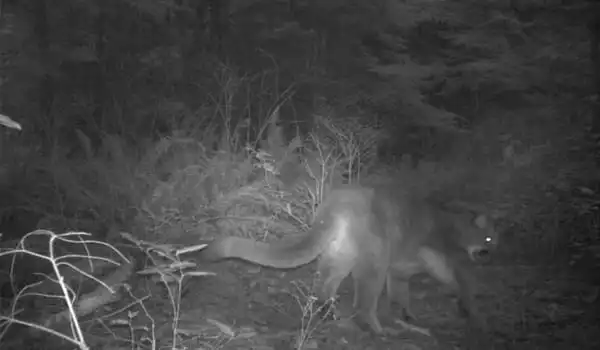A recent study from the University of British Columbia provides new evidence that protected areas are beneficial at wildlife conservation. Researchers from UBC’s Faculty of Forestry examined data from a worldwide data set of 8,671 video trap sites spread across four continents. They discovered increased animal diversity in survey areas whose habitat was designated as protected, as opposed to forests and other wilderness areas that did not have such status.
A recent study from the University of British Columbia employed thousands of remote cameras to track creatures across four continents, from leopards to tigers and bears. The findings show that designating an area as ‘protected’ is the single most effective way to protect animal diversity. This was true even when human disturbances such as recreational use and logging occurred in these protected areas.
“This isn’t shocking news in and of itself, but it’s exciting evidence of the critical role that parks and nature reserves play in wildlife conservation,” says Dr. Cole Burton (he/him), senior author of the study and a conservation biologist who studies mammal populations and human-wildlife coexistence. “As international debates on new global targets for increasing protected areas continue, it is critical to be able to quantify the advantages of the safeguards that now exist.”
We were able to synthesis 91 camera trap studies from 23 countries to come up with a worldwide picture of the effect of protected areas on mammal diversity by drawing on such a large dataset. The study looked for a variety of mammal species, from caribou in Canada to leopard cats in China.
Dr. Cole Burton
In 2019, a group of renowned scientists from around the world gathered to assess the extinction risks faced by thousands of plant and animal species on the planet. The results were sobering: one million species are already on the verge of extinction, and at the rate the world was going, its complex tapestry of life was dying at a rate hundreds of times faster than the average during the previous 10 million years.
Simultaneously, scientists have become more concerned that protecting biodiversity nature’s life-support system cannot be viewed in isolation from climate change. A warming globe may soon result in the extinction of entire arctic ecosystems; increasing deserts and drought are anticipated to engulf vast swaths of tropical countries, rendering them untenable.

According to first author Cheng Chen (he/him), a forestry Ph.D. student who relied on two international wildlife camera databases for his analysis, this is the biggest number of wildlife cameras ever studied in a single study.
“We were able to synthesis 91 camera trap studies from 23 countries to come up with a worldwide picture of the effect of protected areas on mammal diversity by drawing on such a large dataset,” Chen explained.
The study looked for a variety of mammal species, from caribou in Canada to leopard cats in China. According to Burton, protected areas are the last strongholds of many endangered mammals. He adds that mammals are a particularly difficult species to protect since they require extensive regions for habitat and so frequently come into conflict with people.
On land, the destruction of forests and wetlands in order to extract resources and develop towns exacerbates the stresses on wildlife. (According to a United Nations assessment, 85% of the world’s wetlands have been destroyed, while 77% of the world’s land has been “seriously altered.”) What can be done to give life the best chance of survival as the earth enters the Anthropocene — an age dominated by humans?
“If we want to preserve larger mammals around, as well as the vital functions they play in ecosystems,” Burton says, “we need to maintain concentration on the expansion of the protected area network.” “In reality, the world is currently debating new targets for how much of the earth’s surface should be covered by parks under the Convention on Biological Diversity. Better information is required to inform these policy deliberations. Hopefully, this research will assist to fill in the gaps in our knowledge.”




